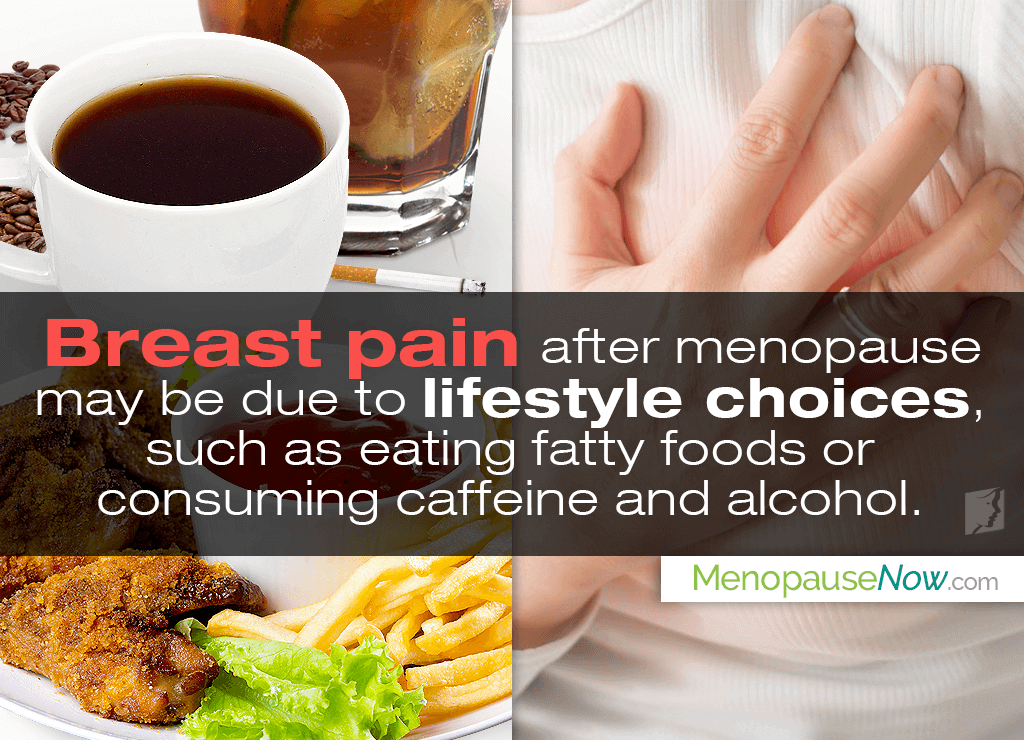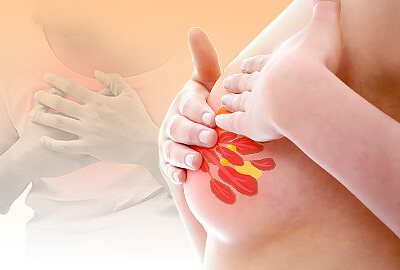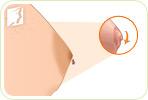Whether breast pain is a new experience during menopause or a familiar discomfort from decades of premenstrual syndrome (PMS), it's never too late to learn more about the relationship between postmenopause and breast pain. Continue reading to discover more about breast pain after menopause so that you can have a better understanding of the condition and how to treat it.
Breast Pain Defined
Breast pain, also known as mastalgia, mastodynia, and mammalgia, is mild to intense pain in one or both breasts. While some women experience a general breast tenderness that seems to linger, others can experience extreme pain from the slightest touch.
On the other hand, non-cyclic is more common in postmenopausal women as it more constant. Breast pain that comes and goes after menopause is also characteristic of non-cyclic tendencies. This discomfort is typically felt in one breast, but pain in both breasts after menopause is also possible.
Causes
Breast pain after menopause that is non-cyclic can be caused by a variety of factors, including breast cysts and tumors; trauma; arthritic pain in the chest cavity; pain in the muscles or joints that surround the breasts; breast size; and more.
Also, if suffering from mastalgia after menopause, then it may be due to lifestyle choices, such as eating fatty foods, having lots of stress and anxiety, or consuming caffeine, alcohol, or cigarettes.
Managing Breast Pain after Menopause
Managing postmenopausal breast pain consists of:
- Wearing a well-fitted, supportive bra when exercising or sleeping (if pain is severe)
- Avoiding excessive consumption of caffeine
- Consuming a low-fat diet, of which only 15 to 20 percent of daily calories comes from fat
- Applying ice packs or warm compresses
- Performing self-massages
- Partaking in relaxation and complementary therapies, such as acupuncture or aromatherapy
Treating Breast Pain after Menopause
Treating postmenopausal breast pain depends upon a woman's age, symptoms, and general health. Determining the underlying cause is imperative to treatment effectiveness.
Alongside breast pain treatments that focus on natural and effective lifestyle changes - optimized diet, wholesome habits, etc. - there are a couple more options women may pursue for relief:
Supplements
Some women reach to supplements for relief, of which two are renowned for their effectiveness: evening primrose oil or fish oil supplements as well as vitamins B6 and E.1,2
Evening primrose oil and fish oil work by providing the body with high levels of omega-3 fatty acids, which are essential fatty acids that help reduce inflammation in the body.
Medications
Non-steroid anti-inflammatory drugs (NSAIDs), such as ibuprofen, naproxen, or aspirin, and paracetamol, also known as acetaminophen, have all been used to help relieve non-cyclical pain.
Consult with your doctor about correct dosing and other instructions, especially if suffering from stomach ulcers, medication allergies, kidney problems, or asthma.
When to Worry
Breast pain is normal and does not increase your risk of breast cancer. Nevertheless, if the pain is constant, excruciating, and life-disrupting, you may want to see your doctor at the earliest opportunity. This is especially true if you notice any lumps, irregularities, or nipple discharge.
Sources
- Breast Cancer Care. (2018). Breast pain. Retrieved May 15, 2019, from https://www.breastcancercare.org.uk/information-support/have-i-got-breast-cancer/benign-breast-conditions/breast-pain#noncyclical
- Harvard Health Publishing. (2018). Breast pain: Not just a premenopausal complaint | Do fish oil supplements reduce inflammation? Retrieved May 15, 2019, from https://www.health.harvard.edu/pain/breast-pain-not-just-a-premenopausal-complaint | https://www.health.harvard.edu/staying-healthy/do-fish-oil-supplements-reduce-inflammation
- Indiana University Bloomington. (2018). Breast Problems. Retrieved May 15, 2019, from https://healthcenter.indiana.edu/answers/breast-problems.shtml
- John Hopkins Medicine. (n.d.). Breast Pain (Mastalgia). Retrieved May 15, 2019, from https://www.hopkinsmedicine.org/health/conditions-and-diseases/mastalgia-breast-pain
Footnotes:
- National Center for Complementary and Integrative Health. (2016). Evening Primrose Oil. Retrieved February 20, 2020 from https://nccih.nih.gov/health/eveningprimrose
- Iranian Journal of Nursing and Midwifery Research. (2015). Clinical effectiveness of vitamin E and vitamin B6 for improving pain severity in cyclic mastalgia. Retrieved February 20, 2020 from https://www.ncbi.nlm.nih.gov/pmc/articles/PMC4700694/




